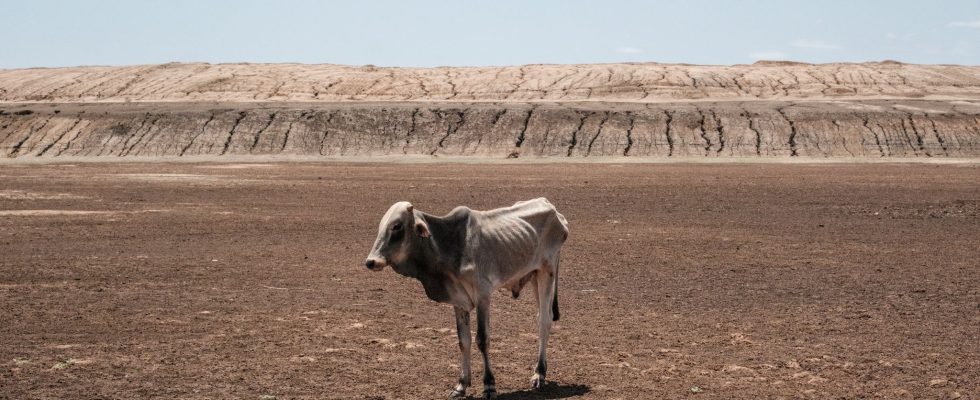The period 2023-2027 will be with almost certainty the hottest ever recorded on Earth, under the combined effect of greenhouse gases and the El Niño weather phenomenon, which are driving up temperatures, warned this Wednesday, May 17. ‘UN. In addition, global temperatures are expected to soon exceed the most ambitious goal of the Paris climate agreements, warns the World Meteorological Organization.
“There is a 98% chance that at least one of the next five years, and the five-year period as a whole, will be the warmest on record,” the WMO said. It estimates a 66% chance that the average annual global surface temperature will exceed pre-industrial levels by 1.5°C for at least one of the next five years. The 2015 Paris Agreement aims to keep global average temperature rise to well below 2°C above pre-industrial levels from 1850 to 1900 and if possible to 1.5°C above those same levels. levels.
Virgin territory
The data published on Wednesday “does not mean that we will permanently exceed the 1.5°C threshold of the Paris Agreement, which refers to long-term warming over many years”, underlined the secretary general of WMO, Petteri Taalas, quoted in a press release. “However, the WMO is sounding the alarm by announcing that the 1.5°C threshold will be temporarily crossed and this, more and more frequently”, he underlined. “An El Niño episode is expected to develop in the coming months. Combined with human-induced climate change, it will push global temperatures to unprecedented levels,” said the climate specialist.
And to leave no illusions about the seriousness of the situation, the Finn insisted on the need to prepare because “the repercussions on health, food safety, water management and the environment will be considerable”. El Niño, is a natural climatic phenomenon generally associated with an increase in temperatures, increased drought in some parts of the world and heavy rains in others. It last occurred in 2018-2019 and gave way to a particularly long episode of almost three years of La Niña, which causes the opposite effects and in particular a drop in temperatures.
In early May the WMO estimated that there was a 60% chance of El Niño developing by the end of July and an 80% chance by the end of September. Typically, El Niño raises global temperatures within a year of its onset, or 2024 for this cycle. Wednesday’s forecast shows that “we have not been able to limit warming so far and we are still moving in the wrong direction,” Petteri Taalas told a news conference. He estimates that it could take until the 2060s to gradually halt the negative trend and keep things from getting worse.
Despite the dampening effect of La Nina, the past eight years have been the hottest on record and 2016 holds the record. Greenhouse gases – the three main ones being CO2, methane and nitrous oxide – are at record levels in the atmosphere, trapping heat there and driving up temperatures. “Returning to a normal level could even take thousands of years,” said Petteri Taalas.
Uninjured person
“It will be a sad day when we pass 1.5 degrees, but that’s no reason to give up,” said Leon Hermanson of Britain’s national weather service, the Met Office, the WMO’s lead center on climate forecasting. annual to decennial.
“We must emit as few greenhouse gases as possible, any reduction in emissions will reduce global warming”, explains the meteorologist, stressing that “no one will be spared by these changes” which are already causing disasters and population displacements. In addition, predictions of extreme weather events are “still a bit unknown”, but it is through these extremes that the impact of climate change is felt.
